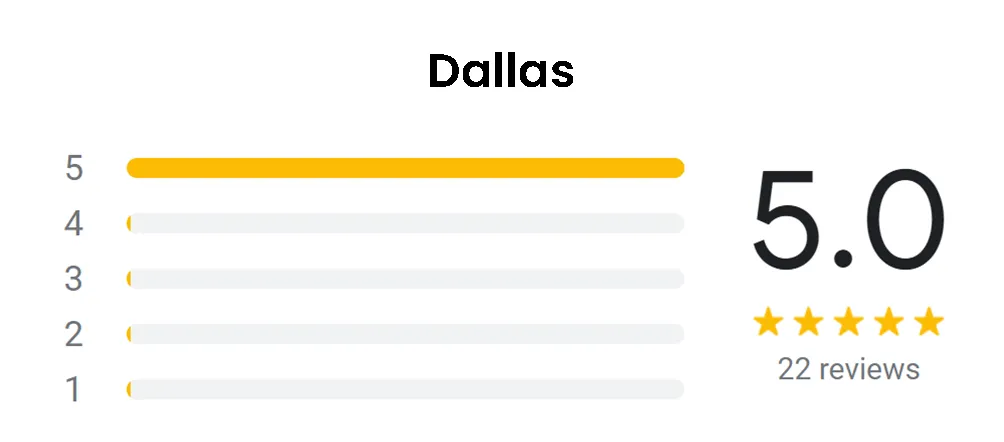
Jumping spiders are fascinating pets that offer enthusiasts a unique experience. To keep jumping spiders as pets, providing them with the right environment, diet, and care is essential to ensure their well-being and longevity. These small arachnids are known for their vibrant colors and intriguing behaviors, making them an excellent choice for novice and experienced keepers.
Creating a suitable habitat is the first step in keeping jumping spiders. They thrive in a well-ventilated enclosure that mimics their natural setting, with foliage and hiding spots. Additionally, understanding their dietary needs—primarily a variety of live insects—plays a crucial role in their health.
For those considering keeping jumping spiders as pets, it is important to monitor their behavior and health regularly. These creatures are typically friendly and curious, with individual personalities that can be quite engaging. With a little dedication, keeping jumping spiders can be a rewarding experience.
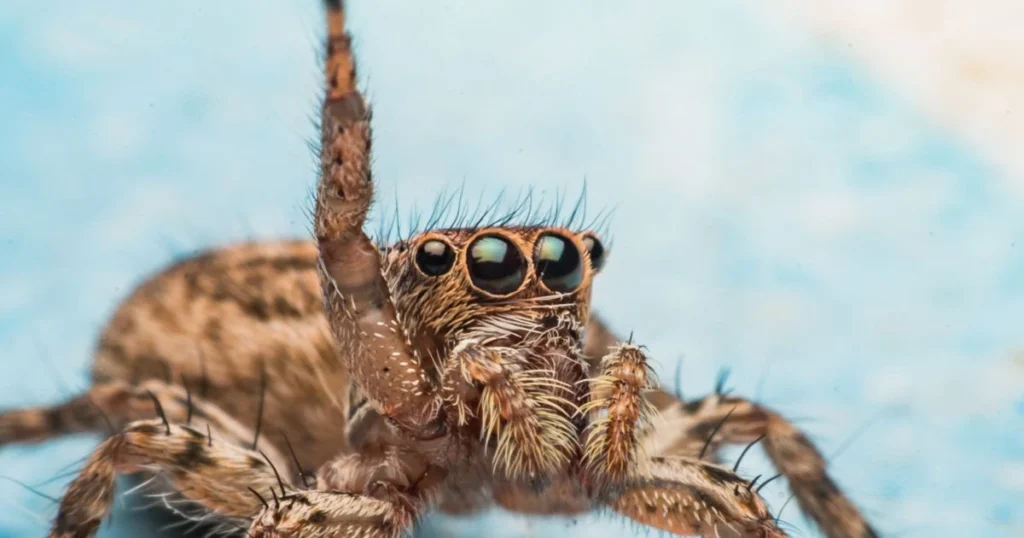
Jumping spiders are fascinating creatures known for their unique characteristics and behaviors. Recognizing their species and natural habitat helps potential owners create an appropriate environment.
Jumping spiders belong to the family Salticidae, which includes over 6,000 species. They exist in various habitats worldwide, from forests and grasslands to urban areas. Some popular species kept as pets include the Phidippus audax and Salticus scenicus.
Typically, they thrive in environments with plenty of vertical structures to climb. They often inhabit places like tree trunks, rocks, and even buildings in the wild. This adaptability allows them to hunt effectively, using their excellent vision for stalking prey.
Known for their inquisitive nature, jumping spiders exhibit a range of behaviors. They are not web weavers. Instead, they rely on their exceptional jumping ability to catch prey and navigate their surroundings.
These spiders can show curiosity towards their owners, sometimes approaching or observing them closely. Despite their small size, they are known to have distinct personalities. Each spider can display varying levels of boldness or shyness, making them unique pets that can bond with their keepers.
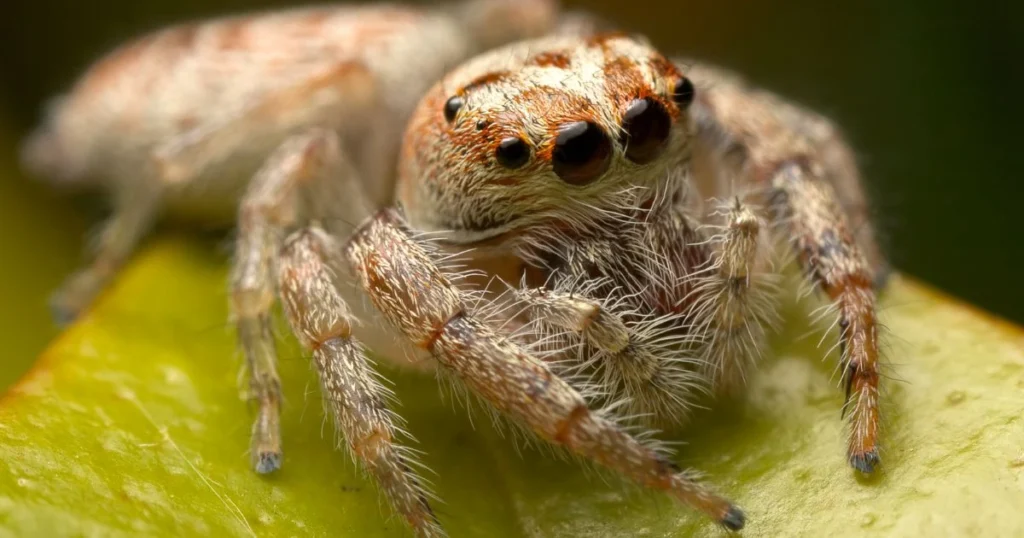
Choosing suitable housing for jumping spiders is essential for their well-being. The right enclosure, proper setup, and environmental conditions contribute significantly to their health and activity.
When selecting an enclosure, opt for a small glass terrarium or a plastic container with good ventilation. A minimum size of 5 gallons is recommended for adequate space, but 10 gallons provides more room for climbing and activity.
Ensure the enclosure includes a secure lid to prevent escapes. Use materials like mesh or a tight-fitting cover. Proper ventilation is crucial, as jumping spiders thrive in environments with good airflow.
Add appropriate substrates to the bottom of the enclosure, such as coconut fiber or peat moss. This will assist with moisture retention while enabling easy cleaning. The substrate should be about 1 inch deep.
Incorporate climbing structures using branches, rocks, and artificial plants. Jumping spiders are agile climbers, so providing vertical space enhances their habitat. To reduce stress, avoid overcrowding the enclosure.
Maintain clean surroundings by replacing substrate regularly and removing waste. Placing a small water dish can also help maintain hydration.
Jumping spiders prefer temperatures between 70°F and 80°F, which is crucial for their activity levels. A heat mat or under-tank heater can help but always monitor to prevent overheating.
Humidity levels should be kept between 40% and 60%. Regular misting can help achieve this, but avoid creating excess moisture that could lead to mold. A hygrometer can assist in monitoring humidity levels accurately.
Maintaining these environmental conditions allows for a healthy, vibrant habitat conducive to keeping jumping spiders as pets.
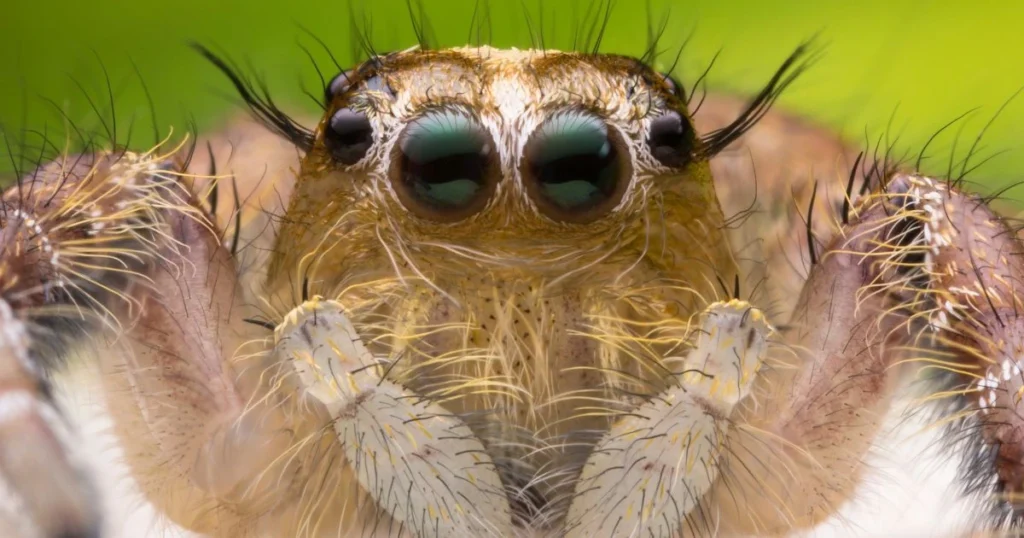
Providing the proper diet is essential for the health and well-being of jumping spiders. Their nutritional needs revolve around specific prey types, feeding schedules, and hydration practices that ensure robust growth and longevity.
Jumping spiders should be fed approximately every 2 to 3 days, depending on their age and activity level. Younger spiders tend to require more frequent feeding due to their rapid growth. Adults can be fed less often, but monitoring their body condition is crucial.
It is important to avoid overfeeding. A good rule of thumb is to provide prey about 1/4 of the spider's body size. This ensures the spider can easily consume its food, reduces waste, and maintains a clean habitat.
Appropriate prey includes small insects such as fruit flies, pinhead crickets, and small roaches. These options are ideal as they align with the jumping spider's natural hunting behavior.
Live prey is preferred, as jumping spiders are active hunters. They should be able to stalk and pounce on their food, stimulating their natural behavior. Avoid feeding them large insects that could harm the spider or lead to stress.
Providing supplements like calcium and vitamins can enhance a jumping spider's diet. These are particularly beneficial when feeding insects that lack certain nutrients.
Water should be offered in small droplets on the enclosure walls, mimicking morning dew. Jumping spiders drink droplets rather than soaking in water. Regular misting can help maintain humidity, ensuring access to hydration without risking drowning.
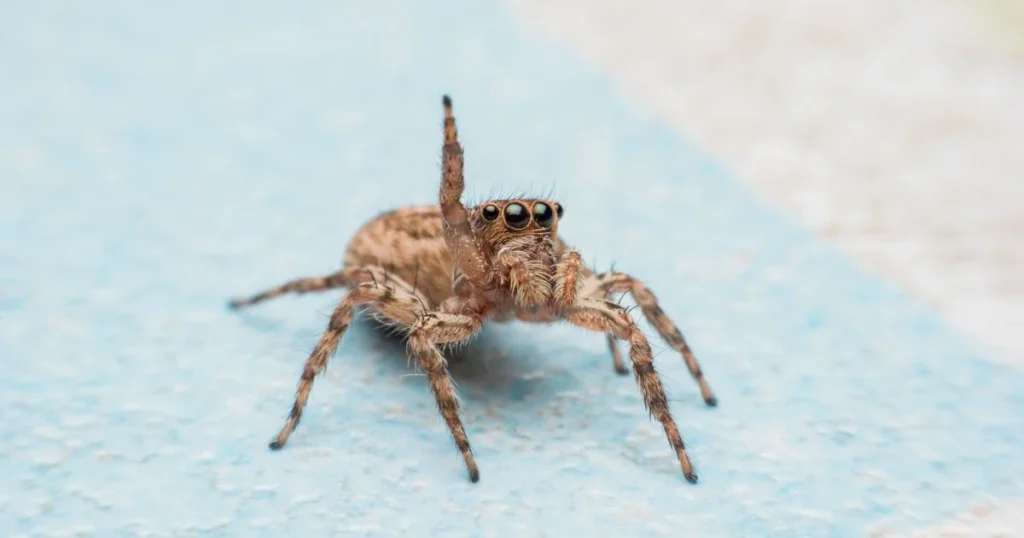
Maintaining the health and happiness of jumping spiders requires attention to their specific needs. This section covers health monitoring, molting and growth, and appropriate handling techniques.
Regular health checks are essential for pet-jumping spiders. Look for signs of stress, such as lethargy, lack of appetite, or unusual behavior.
Perform inspections to ensure that their habitat is clean and free from mold or pests. Providing fresh water and a varied diet will also contribute to their well-being.
Common food options include crickets and mealworms, which should be dusted with calcium and vitamins to support spider health. If a spider shows any signs of illness, it is advisable to consult an expert to determine the right course of action.
Molting is a crucial process demonstrating a jumping spider's growth and health. Depending on their age and species, spiders typically molt every few weeks or months.
During this time, it's important to create a stress-free environment. Before molting, spiders often become more secretive and inactive.
Provide plenty of hiding spots within their enclosure to make them feel secure. After molting, spiders may appear vulnerable and should not be disturbed until they have fully hardened.
Handling jumping spiders requires a gentle approach to avoid causing stress. Allow the spider to walk onto a hand rather than grab it for best results.
Spiders can be held briefly, but frequent handling is discouraged as it can increase their anxiety. It is important to never drop or force the spider into a situation where it feels threatened.
When interacting, observe their behavior closely. If the spider exhibits discomfort, such as attempting to escape, it is best to return it to its enclosure.
If you have any wildlife or pest concerns, consider calling Critter Stop at (214) 234-2616 for a free inspection. Critter Stop has a fantastic reputation and online customer reviews because it provides high-quality work and great customer service.
Keeping jumping spiders as pets requires specific knowledge about their habitat, diet, and care. Addressing common questions can help ensure a successful experience for both the pet and the owner.
A suitable enclosure for jumping spiders should be well-ventilated and secure. A small terrarium or glass container with a lid can work well. Include substrate like coconut fiber and provide climbing surfaces like sticks or plants.
Maintaining the right humidity and temperature is vital for their well-being. An environment between 65-75°F with humidity around 30-50% is ideal. Regular cleaning and monitoring for mold or pests will support their health.
Jumping spiders primarily eat live insects. Offer small crickets, fruit flies, or other small invertebrates. It's essential to provide food that is appropriately sized to prevent injury to the spider.
Position the enclosure in a low-traffic area to minimize stress. Avoid loud noises and bright lights. Regularly check for signs of stress or illness to adjust the environment accordingly.
Regular observation is critical. Ensure they are active and feeding well. Occasionally, provide a shallow dish of water for drinking, but keep it shallow to avoid drowning hazards.
Encourage activity by providing various surfaces to explore. Adding small items like twigs or silk plants can stimulate their natural behaviors. Feeding them at different times can also help maintain engagement.
A habitat that mimics their natural environment is best. Use a mix of vertical and horizontal space with hiding spots. Adding plants or decorations helps create a stimulating and comfortable habitat for jumping spiders.
Visit our Critter Library and learn more about our furry friends


